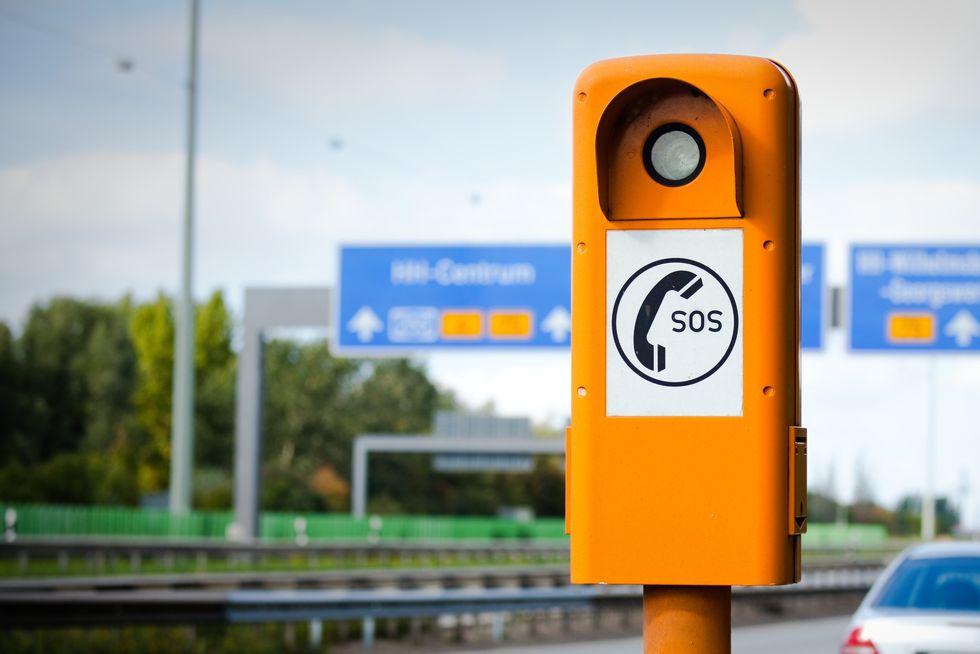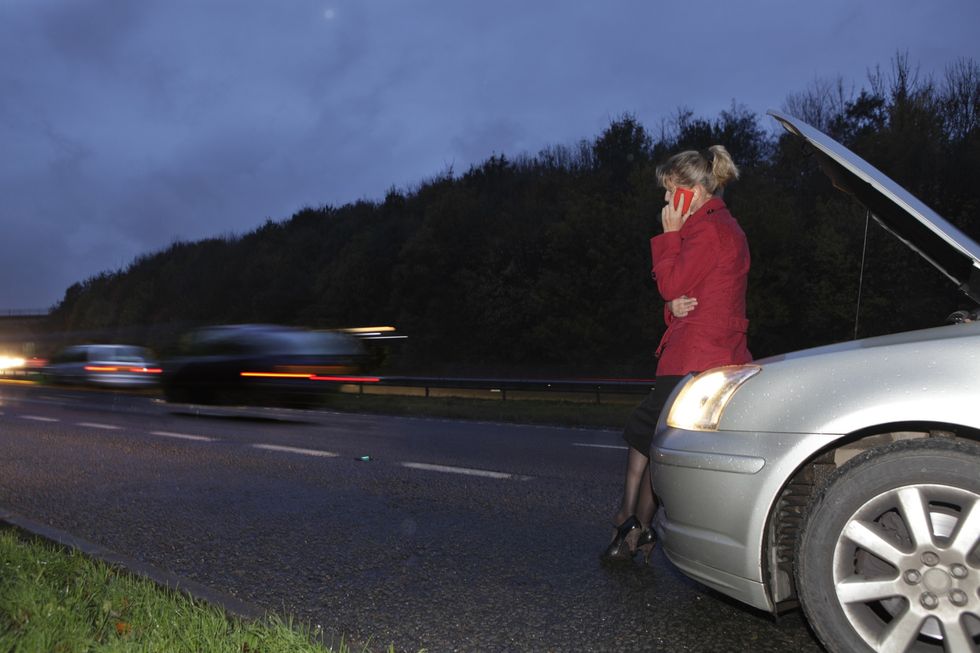Hemma Visavadia
Guest Reporter
More than half of UK drivers are unsure whether motorway Emergency Roadside Telephones are still functional posing huge safety concerns.
It comes after a study found that 56 per cent of motorists don't know if the phones work, whilst one in 10 wrongly believe they no longer exist.
According to official reports there are 8,551 Emergency Roadside Telephones currently operational across the UK motorway network, connecting drivers directly to traffic control centres or police control rooms in emergencies.
The findings raise concerns about driver awareness of crucial motorway safety infrastructure.
Do you have a story you'd like to share? Get in touch by emailing [email protected]

In England, 6,961 Emergency Roadside Telephones are currently operational, with a further 922 in Scotland and 668 in Wales.
The maintenance schedule varies across the nations. Scottish and Welsh phones undergo checks every one to two months while in England, the phones receive a full service every two years, though a daily reporting system ensures any faults are fixed within 48 hours.
These phones form a critical part of motorway safety infrastructure, providing direct communication to emergency services.
Despite their importance, research shows many drivers remain unaware of their continued operation and maintenance.
Driver uncertainty about Emergency Roadside Telephones extends beyond their functionality, with 69 per cent unsure how to locate the closest phone during an emergency.
Over a quarter of UK adults admit they don't know if the phones would connect them to an operator in an emergency situation.
These concerns are particularly significant given that a third of UK drivers have experienced a breakdown in the past five years. During these incidents, 18 per cent of drivers reported having no mobile phone reception, while 16 per cent had no battery charge on their devices.
Drivers can locate Emergency Roadside Telephones by following marker posts positioned at 100-metre intervals along the motorway hard shoulder.
These posts direct motorists to the nearest emergency telephone, which are placed at one-mile intervals along motorways. When using the phones, callers typically receive a response in less than 10 seconds - averaging 9.2 seconds.
Nicholas Mantel, Head of Churchill Motor Insurance said: "It is concerning to see that many people believe Emergency Roadside Telephones no longer work. These telephones are an effective way of seeking help when broken down.
“The telephones connect directly to contact centres and help pinpoint the drivers exact location so that emergency services get to breakdowns as quickly possible."
He stressed the importance of drivers being aware of and knowing how to locate the nearest Emergency Roadside telephones in breakdown situations.
LATEST DEVELOPMENTS:

National Highways advises drivers not to attempt vehicle repairs themselves or place warning triangles when stopping on motorways.
The agency added: “Leave at the next junction or service area if you can. If that’s not possible, move left onto the hard shoulder or nearest emergency area. Don’t put out a warning triangle or try to repair your vehicle yourself.
“If you can, get yourself and any passengers out of the vehicle via the passenger door, and get behind the safety barrier where there is one, and if it is safe to do so, and on to the verge. If it's unsafe to exit the vehicle, drivers should keep seatbelts fastened, hazard lights on, and call 999 immediately.”
Find Out More...
It comes after a study found that 56 per cent of motorists don't know if the phones work, whilst one in 10 wrongly believe they no longer exist.
According to official reports there are 8,551 Emergency Roadside Telephones currently operational across the UK motorway network, connecting drivers directly to traffic control centres or police control rooms in emergencies.
The findings raise concerns about driver awareness of crucial motorway safety infrastructure.
Do you have a story you'd like to share? Get in touch by emailing [email protected]

In England, 6,961 Emergency Roadside Telephones are currently operational, with a further 922 in Scotland and 668 in Wales.
The maintenance schedule varies across the nations. Scottish and Welsh phones undergo checks every one to two months while in England, the phones receive a full service every two years, though a daily reporting system ensures any faults are fixed within 48 hours.
These phones form a critical part of motorway safety infrastructure, providing direct communication to emergency services.
Despite their importance, research shows many drivers remain unaware of their continued operation and maintenance.
Driver uncertainty about Emergency Roadside Telephones extends beyond their functionality, with 69 per cent unsure how to locate the closest phone during an emergency.
Over a quarter of UK adults admit they don't know if the phones would connect them to an operator in an emergency situation.
These concerns are particularly significant given that a third of UK drivers have experienced a breakdown in the past five years. During these incidents, 18 per cent of drivers reported having no mobile phone reception, while 16 per cent had no battery charge on their devices.
Drivers can locate Emergency Roadside Telephones by following marker posts positioned at 100-metre intervals along the motorway hard shoulder.
These posts direct motorists to the nearest emergency telephone, which are placed at one-mile intervals along motorways. When using the phones, callers typically receive a response in less than 10 seconds - averaging 9.2 seconds.
Nicholas Mantel, Head of Churchill Motor Insurance said: "It is concerning to see that many people believe Emergency Roadside Telephones no longer work. These telephones are an effective way of seeking help when broken down.
“The telephones connect directly to contact centres and help pinpoint the drivers exact location so that emergency services get to breakdowns as quickly possible."
He stressed the importance of drivers being aware of and knowing how to locate the nearest Emergency Roadside telephones in breakdown situations.
LATEST DEVELOPMENTS:
- Major bridge forced to shut due to strong winds impacting thousands of journeys with drivers left stranded
- One in four drivers mulling over buying an electric car next year amid growing interest - 'Immense potential'
- Drivers to benefit from more car insurance options to help lower prices as costs reach unaffordable levels

National Highways advises drivers not to attempt vehicle repairs themselves or place warning triangles when stopping on motorways.
The agency added: “Leave at the next junction or service area if you can. If that’s not possible, move left onto the hard shoulder or nearest emergency area. Don’t put out a warning triangle or try to repair your vehicle yourself.
“If you can, get yourself and any passengers out of the vehicle via the passenger door, and get behind the safety barrier where there is one, and if it is safe to do so, and on to the verge. If it's unsafe to exit the vehicle, drivers should keep seatbelts fastened, hazard lights on, and call 999 immediately.”
Find Out More...
